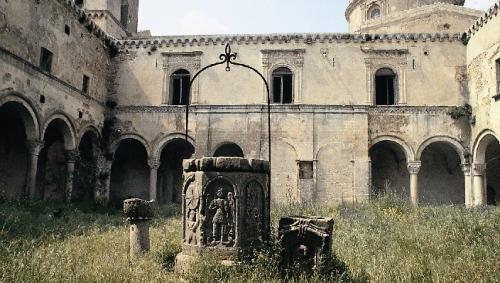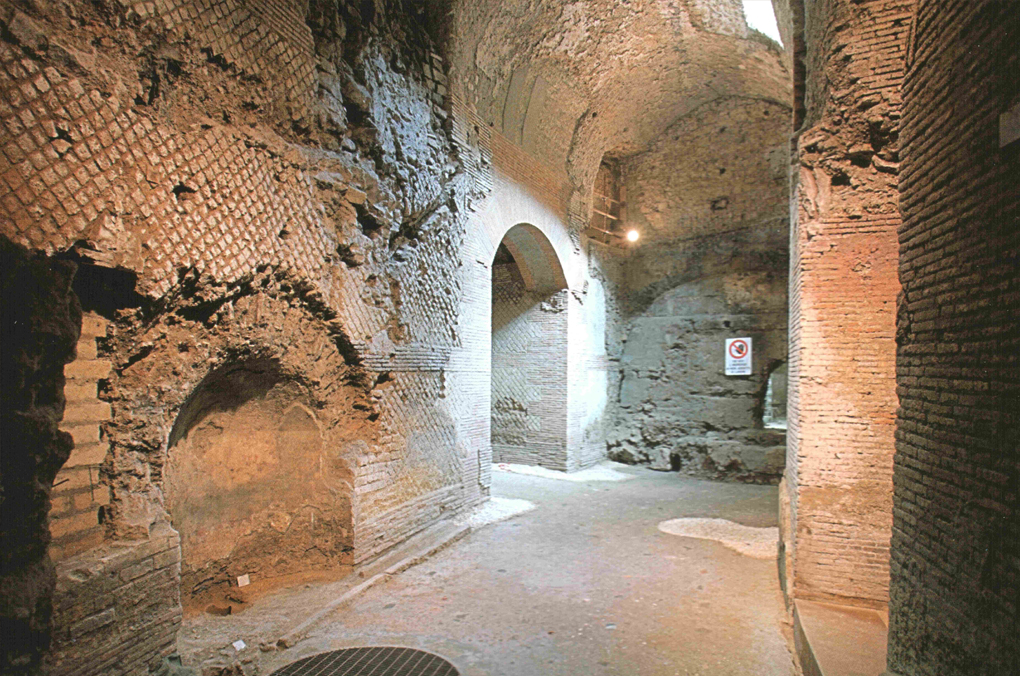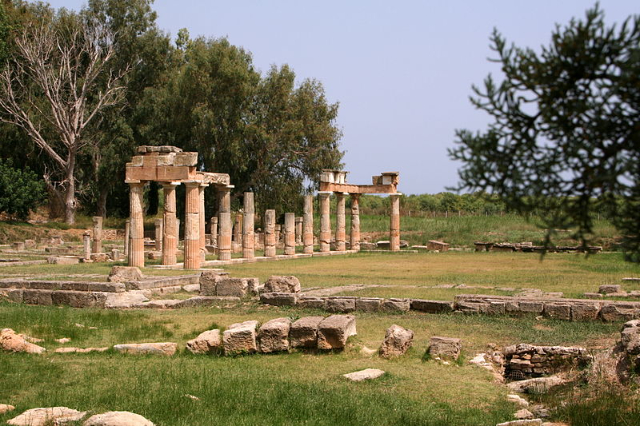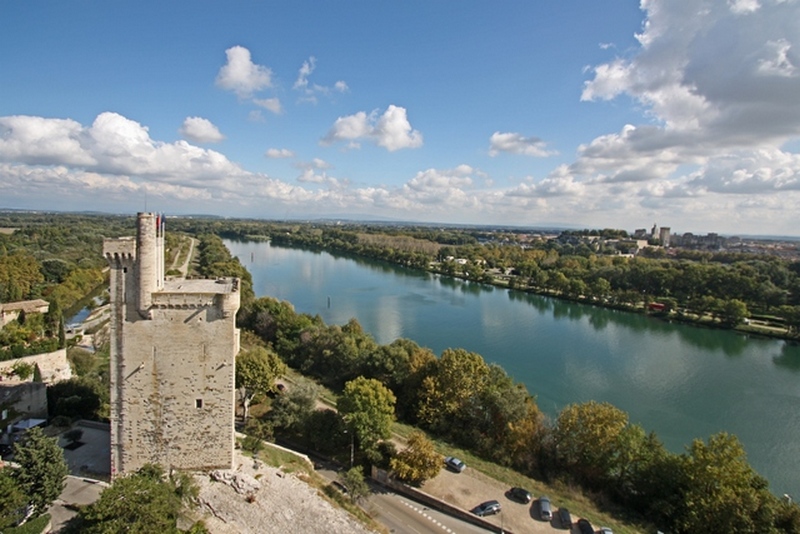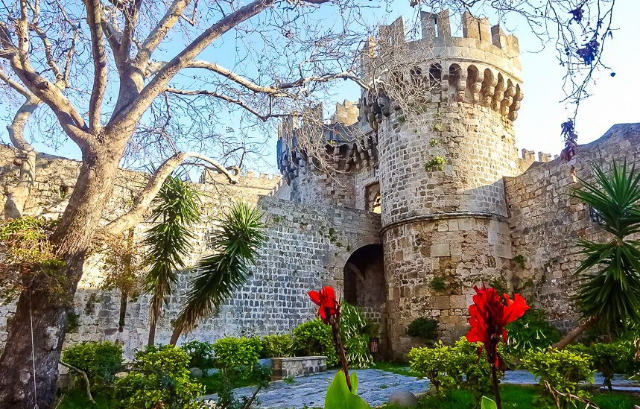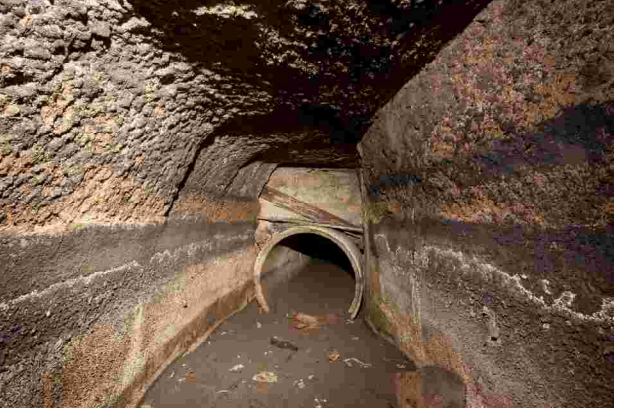The earliest frequentation of the area is documented from the Bronze Age, while the formation of the first inhabited nucleus is attested around the 9th-8th centuries BC. Greek colonization transformed the settlement into an important city, surrounded by an imposing fortification, dated 4th – 3rd century B.C., which remained efficient even in the late Republican age. A section of this survives today, visible in a small urban archaeological park. Romanization brought about a change in the exploitation of the land, with al reduction in the number of farms and thus the population. In the cityà è inaugurated a public building, of which a telamon and a floor mosaic remain, commemorating the’arrival of 4 magistrates from Rome. The toponym of Civitas Severiana, handed down in medieval documents suggests an ancient Roman name derived, as for other Lucanian sites of the imperial phase, from toponyms linked to vast parental aggregations settled in the territory, perhaps a Gens Severa or Severiana, of unclear origin. Montescaglioso thus lost importance, the settlement contracted and rustic, slave-run villas sprang up in the territory, which have been archaeologically investigated in recent years.
In the early medieval phase Montescaglioso è attested in a series of documents: already in the 6th century AD the monk Guidone, in his journey, described during the Gothic-Byzantine war, mentions the town; in 893 the town è is remembered as castrum Montis Caveosi,, in a document from the Lombard abbey of S. Vincenzo al Volturno; in 1003 Montescaglioso è remembered, in a chronicle, for having resisted a Saracen raid.
In the middle of the 11th century the Norman domination of southern Italy began. The first Norman feudal lord of Montescaglioso è Robert nephew of the famous Guiscard, progenitor of the Altavilla family and later passes other members of the Altavilla family and among them Emma, daughter of Roger I Great Count of Sicily, sister of Roger II first King of Naples and Sicily, and ancestor of the Emperor Frederick II of Swabia.
The Norman presence fostered the urban development and population growth of the town, as well as the settlement of a large Benedictine monastic community that, with the Abbey of St. Michael Archangel, marked the history of Montescaglioso until the 19th century.
The Norman county of Montescaglioso è one of the most important and extensive political-military institutions of the Apulolucan area, as evidenced by numerous studies and especially attested by the famous Catalogum Baronum, a Norman document of the midà 12th century, in which the existing fiefs in Apulia, Basilicata and Campania are surveyed. The Normans founded the Benedictine abbey of St. Michael the Archangel to which they donated churches and fiefdoms in Apulia and Basilicata. The abbey experienced a phase of long decline, ending with its annexation in 1484 to the Reformed Benedictine Congregation of St. Giustina of Padua, by the will of Pirro del Balzo, Lord of Montescaglioso.
In the mid-sixteenth century the Benedictine abbey of St. Michael è returned to new life. The factories were restored and expanded. The rural estates returned to production, and the monastic community è well projected into a network of nationwide relationships that linked it to major Italian abbeys.
Meanwhile, other monasteries were also established in Montescaglioso. In the mid-15th century the Augustinians built their own convent. In the late 16th century, the Capuchin Fathers settled, building their own convent on a hill overlooking the town. Finally, in the first half of the 17th century, a women’s monastery, SS. Conception, arose, adopting the Benedictine rule.
Montescaglioso became a fief of the Genoese Grillo-Cattaneo family, which took advantage of the resources of the new acquisition and, unlike their predecessors, resided in Montescaglioso inside the medieval castle, transformed into a comfortable palace. In Naples, the Grillo family had supported and protected Torquato Tasso, so even in their small kingdom, they did not give up surrounding themselves with artists. In the marquis palace of Montescaglioso, academies were held and literati and artists gathered, present mainly in Matera. Of this activity, there è a significant attestation in the sonnets that Cavalier Tommaso Stigliani, a famous poet from Matera, dedicated to Grillo, his great protector.
Beginning in the 17th century, the wealthiest families of the city built their dwellings along the most important road axis, present-day Corso Repubblica, which became the place where all the most significant activities were concentrated: trade, artisans, the most important churches and monasteries, and places of representation.
è the phase in which the town expanded outside the fortifications and witnessed the construction of houses around the Capuchin convent and in the vicinity of Porta Maggiore where è the church of S. Rocco, who in 1684 è proclaimed patron saint of the town, and the hospital of SS. Annunziata were erected.
The’emerging urban bourgeoisie came into conflict with the’Abbey of St. Michael and the marquis house of Montescaglioso, which represented feudal power in the townà. The conflicts between the various social components reached a climax in the 18th century, causing the Benedictine monks to move to Lecce in 1784.
The Napoleonic occupation led to the suppression of monastic communities and laws abolishing feudalism. The lands taken away especially from the’abbey of St. Michael, are quotiented and acquired by the most prominent families of the town who also buy from the Marquis much of the propertyà of the marquis house.
The Unity of Italy accentuated the problems of modernization that had begun at the beginning of the century, but it also deepened the social clash that resulted first in the participation of groups of peasants in the phenomenon of post-unification brigandage and then in the start of the imposing migratory flow to the Americas. A band of brigands commanded by Rocco Chirichigno known as Coppolone and his wife , Arcangela Cotugno, was born and took root in Montescaglioso. The flow of emigrants to the Americas began in the late 1970s and increased until the years after World War I, interrupting the impetuous demographic increase that the town had experienced until then.
With the twenty-year Fascist period, the town found new opportunities in the process of structural modernization initiated by the state, which for Montescaglioso essentially meant the construction of the railroad link, albeit narrow-gauge, to Matera, and Bari; the modernization of the road network to the capital and the Metapontino area; and the connection of the town to the Apulian Aqueduct network. The major public works of the 20-year period, helped reduce the drama of unemployment but left the underlying problem unchanged, namely the relations in the countryside between peasants and large landowners.
At the end of the Second World War, the Agrarian Reform, brought about by peasant pressure, finally redesigns the’structure of agrarian property, favoring the birth and development of a small and medium peasant property that forms the basis for the development of the following years. Montescaglioso, as well as other municipalities in which the struggle for land reached moments of exasperation, paid with blood, with the death of laborer Giuseppe Novello.
Today Montescaglioso è a town of about 10,000 inhabitants, with an economy based mainly on’agriculture.
(Edited by Angelo Lospinuso of the CEA of Montescaglioso)
